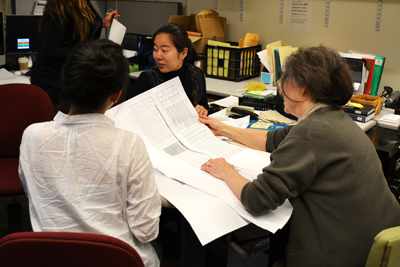
Children often use language differently than adults when referring to a person or thing, which can result in misleading testimony, according to a new Cornell study.
"This is the first study to examine developmental differences in referential language ability as a factor in children's ability to provide accurate testimony," said Stephen Ceci, professor of human development in Cornell's College of Human Ecology. He co-authored the study, which appears in the Journal of Applied Developmental Psychology (33:4), with lead author David Battin, Ph.D. '04, assistant professor at SUNY Institute of Technology, and Barbara Lust, professor of human development, also in the College of Human Ecology.
For the study, 63 children from 3 to 10 years old were shown a four-minute video in which a woman knocked down a stack of empty cans after being asked not to. The researchers compared the ability of the younger children (3-5 years old) with older children (6-10 years old) to explain who did it.
Children as old as 10 used words such as "a," "the" and "they" to refer to the woman. Small changes in the use of these words have big consequences in terms of meaning, including number and specificity, which is critical for legal testimony, the researchers said. Furthermore, the younger children were often incapable of correcting their misleading statements during follow-up questioning, because they don't understand what information listeners need for clarity. Overall, 13 percent of the younger children and 63 percent of the older children provided the information necessary for accurate identification of the wrong-doer.
"We found children lead adult conversational partners astray by using the definite article ['the'] to introduce a new person or a thing when they should have used the indefinite article ['a']," said Battin. "But, the big surprise in this research was the very high rate at which both younger and older children initially used the plural pronoun 'they' to refer to the person who committed the highly salient and disallowed act of knocking the cans down," he said.
Ceci, who has consulted for law enforcement and the legal system for several decades, elaborated: "When police interview young children in a suspected day care abuse investigation, they can be seriously misled when child after child keeps referring to the suspected perpetrator as 'they' rather than 'he' or 'she.' It can lead to the pursuit of multiple perpetrators when the actual situation had only one."
This research was funded by the Cornell Cognitive Studies Program.
Karene Booker is an extension support specialist in the Department of Human Development.










